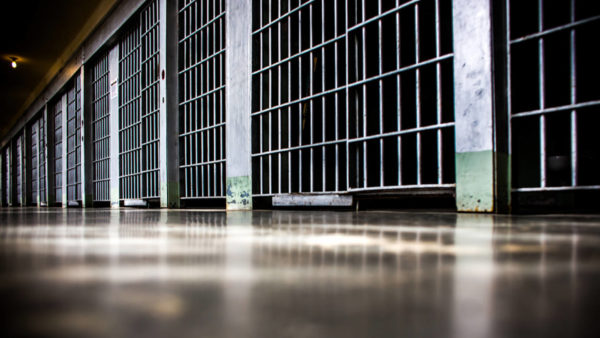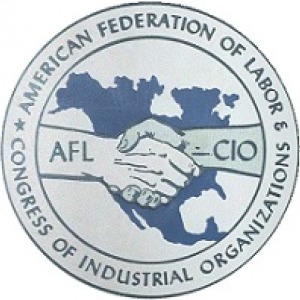WASHINGTON— As the New York City, state, and federal governments mandate that all public employees get vaccinated or face weekly testing and restrictions on the job, public-sector unions are largely responding that they support vaccination, but the rules shouldn’t go into effect until the details have been bargained.
“We expect that the particulars of any changes to working conditions, including those related to COVID-19 vaccines and associated protocols, be properly negotiated with our bargaining units prior to implementation,” American Federation of Government Employees National President Everett Kelley said in a statement after President Joseph Biden issued an executive order July 29. “We encourage all of our members who are able to take advantage of the opportunity to get vaccinated and help our nation put an end to this deadly pandemic.”
The President said in a speech that federal employees will be required to attest that they have been vaccinated. Those who don’t will have to wear masks on the job, be tested at least once a week, and “generally will not be allowed to travel for work.”
The International Federation of Professional and Technical Engineers, which represents about 30,000 federal employees, “fully supports a COVID-19 vaccine mandate for workers in the federal sector,” President Paul Shearon said in a statement. “We don’t think either our members or their mission should be placed at risk by those who have been hesitant to take a shot.”
He added that Biden’s order would likely accommodate exceptions for religious and health reasons.
New York Governor Andrew Cuomo announced similar measures July 28, and New York City Mayor Bill de Blasio did on July 26. All city employees will have to be vaccinated by Sept. 13 or be tested once a week. The week before, the mayor had ordered that by Aug. 2, all municipal hospital and clinic workers who didn’t verify that they’d been immunized would have to show weekly proof of a negative COVID-19 test.
“We have reached the limits of a purely voluntary system,” de Blasio told WNYC radio July 23. By then, fueled by the emerging Delta variant of the virus, the city was averaging more than 700 new cases a day, more than three times the number in late June. By July 29, the daily average had surpassed 1,000.
Several city employee unions objected on the grounds that they had not been consulted. “If City Hall intends to test our members weekly, they must first meet us at the table to bargain,” District Council 37 leader Henry Garrido said July 26. “Weekly testing is clearly subject to mandatory bargaining.”
A DC 37 spokesperson told LaborPress that issues to be bargained would include accommodating exemptions for medical reasons and how, when, and where to test workers who don’t go into an office or are the only ones on their shift.
The vaccination-or-test approach “puts the emphasis on vaccination but still allows for personal choice and provides additional safeguards through regular testing,” a United Federation of Teachers spokesperson told LaborPress. National American Federation of Teachers President Randi Weingarten said the vaccine is “the most important tool we have to protect ourselves; our families; and the students, patients and communities we serve,” but that “vaccinations must be negotiated between employers and workers, not coerced.”
The New York State Nurses Association expressed similar sentiments. “The current body of scientific knowledge, as well as our vast experience on the frontlines of this pandemic, clearly demonstrate that vaccination and proper airborne-infection control measures are needed in the health-care environment to keep health-care workers and vaccinated as well as unvaccinated and immunocompromised patients safe,” it said July 27.
But the union insists that other safety measures are also essential. “We object to employers pushing mandatory employee vaccination while simultaneously lobbying to relax [personal protection equipment] standards, frivolously contesting COVID-19 workers’ compensation claims and [Occupational Safety and Health Administration] citations, and actively cutting corners on health and safety protocols,” NYSNA executive director Pat Kane said in a statement July 21. “The way to build back trust and incentivize further vaccination among health-care workers is to finally meet our broader health and safety demands, not to threaten us with job loss.”
The 1199SEIU health-care workers union, which on July 22 protested against New York-Presbyterian Health System’s decision to fire workers who are not at least partially vaccinated by Sept. 1, did not respond to a message from LaborPress.
Details of Gov. Cuomo’s proposal have not been released, United University Professions President Frederick Kowal told LaborPress, but it is “regrettable that the governor did not approach the public-sector unions first” before the announcement.
Most of UUP’s members, those working at all State University of New York campuses except the College of Optometry, would be covered by an agreement negotiated in late June that requires them to show proof of immunization or face weekly testing.
That agreement does not cover workers at SUNY hospitals. Among the issues that need to be negotiated, Kowal says, are levels of discipline, religious and health exceptions, and timing. Gov. Cuomo, he explains, wants to set the deadline at Labor Day, but two-dose vaccines are given two weeks apart, and it takes another week or so to develop full immunity.
“We are not an impediment to vaccines,” Kowal says. “We have an obligation to our community’s health, but also to our members’ due-process rights.”
UUP says that “nearly 90%” of its members report being vaccinated. New York City employees, however, appear to have a much lower rate. The CITY news site reported July 21 that the number who had received at least one dose ranged from 42% in the Department of Corrections to 65% in the Metropolitan Transportation Authority. DC 37 says slightly more than half of its members who work for the city have been vaccinated, but that percentage might be higher because about 10,000 of them live outside the five boroughs and might have gotten vaccinated there.
A vocal minority is simply refusing to get vaccinated. Unions are reluctant to talk about this on the record, but Kowal said he has heard concerns about it from other union leaders, and a representative from another union agreed privately.
Kowal called a 1998 article published in the British medical journal the Lancet that falsely claimed a link between autism and the measles, mumps, and rubella (MMR) vaccine “one of the biggest tragedies in modern history.” That study, later deemed fraudulent because lead author Dr. Andrew Wakefield had falsified data and was being financially supported by an anti-vaccine lawyer, was retracted by the Lancet in 2010, but vaccination opponents regularly claim it as evidence.
Some of the people refusing to be vaccinated might be reachable or persuadable, Kowal added, but for others, such as conspiracy-theory believers and extreme Trumpers, “there is no hope.”
In the week ending July 28, the federal Centers for Disease Control reported an average of 66,606 new COVID-19 cases per day, more than five times the number a month earlier.
As of July 29, 60.3% of U.S. residents 18 or older were fully vaccinated, according to CDC figures, as were 68.4% of those in New York State. CDC director Rochelle Walensky told reporters July 16 that 97% of the people hospitalized with COVID had not been vaccinated.



